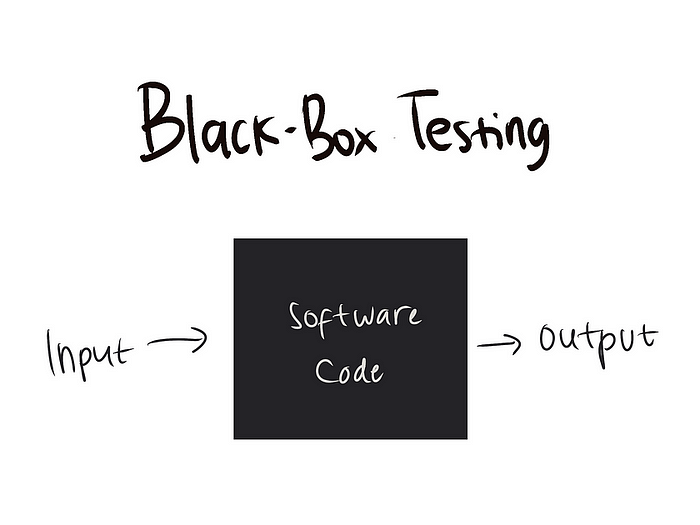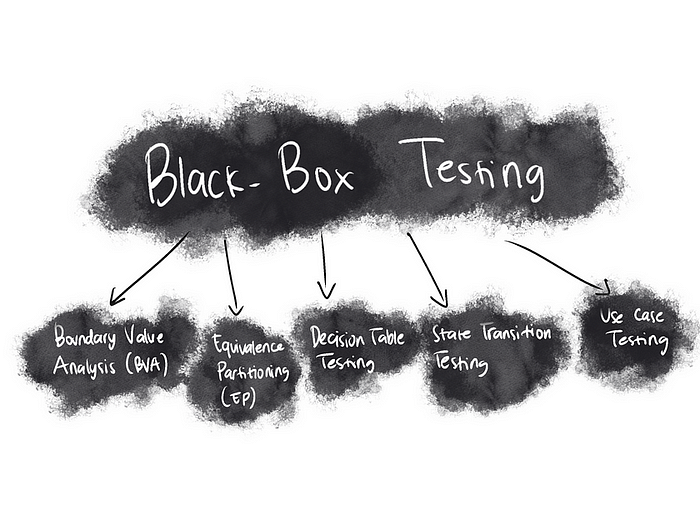Why Black Box Testing is a Must-Know for Every Tester
 Veliya
VeliyaWhen we read about black-box testing, we should immediately think that black is dark. Black-box testing is an ‘invisible’ testing technique.
What is invisible? The process. Black-box testing aims to focus only on the input and output, regardless of how the application code structure is designed.

created by me
Why do we choose black box testing?
Black-box testing is used when testing an application based on the functionality and behavior of the system from the end-user perspective. When implementing black-box testing, the entire system must be integrated and ready for testing as a whole. So that the tester can perform testing to ensure that all features and functions can work together, without having to see the details of the code implementation. This is usually done before the application is ready for release to validate whether the application meets the requirements and needs that have been set.
In addition, black-box testing can also be applied to the testing needs below.
Integration Testing : testing interactions between different modules or interfaces
Regression Testing : test the stability of the application after fixes or addition of new features
Unit Testing : testing the functionality of very complex components
Smoke Testing : testing a newly completed application to ensure features are working before performing more detailed testing
Beta Tesing : test the application in real conditions to see whether it meets expectations from the user’s point of view
Load Testing/ Performance Testing : test system performance to remain responsive when there is a large amount of usage
All of the examples above are the application of black-box testing in application testing. The tester does not need to know how the function or feature is made and how the code is. But the tester must ensure the conformity of the input and output with what has been set when the application was created at the beginning.
How to do black-box testing?

created by me
It sounds easy when you know that black-box testing only ensures that input and output are as expected. However, as a tester who wants to test the quality of the application well. We must be able to identify the most effective test scenarios so that we can create test cases that cover a wider area with less effort, because in reality we don’t have much time. There are several strategies that can be learned when you want to do black-box testing.
- Boundary Value Analysis (BVA)
When the system we are going to test has an input or output range function, then we can use Boundary Value Analysis (BVA). Such as age forms or character limit. Helps testers to test on ranges that are more likely to cause bugs.
- Equivalence Partitioning (EP)
When many values can be input, they can be grouped into categories that have similar behavior. Avoiding time-consuming repetition of tests.
- Decision Table Testing
Decision Table Testing can make it easier for testers to understand the test logic in the form of a table. Used when the system has a complex combination of inputs and decision logic involving many conditions.
- State Transition Testing
When a system has a state or condition that changes based on certain inputs. For example, systems that have finite state machines such as ATMs, workflow approvals, or reservation systems. Ensure that transitions between states work correctly. Because bugs often appear when moving from one state to another.
- Use Case Testing
Used to test the system from the user’s perspective according to the use case document. Ensure the system functions as expected by users in real-world scenarios.
By using these techniques, testers can optimize the testing process. Although they do not know how to implement the code and create the function structure in it. But testers can ensure that the application is in accordance with what the user needs and expectations.
Subscribe to my newsletter
Read articles from Veliya directly inside your inbox. Subscribe to the newsletter, and don't miss out.
Written by
